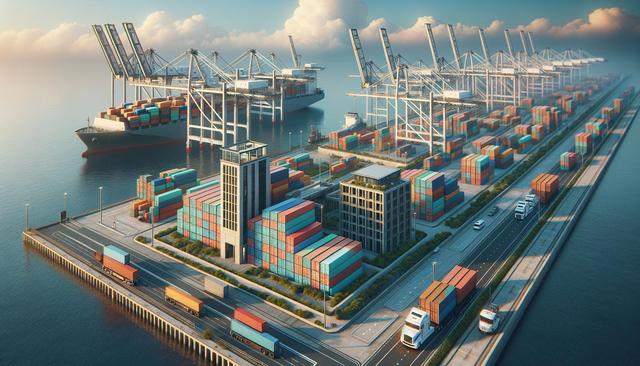Origins and Evolution of Shipping Containers
Shipping Containers: Versatile Storage and Transport Solutions have changed the way goods move across the globe. Originally developed in the mid-20th century to streamline cargo loading and unloading, these containers have now become an integral part of global trade and logistics. Made from strong steel and designed to be stackable, they have largely replaced traditional break-bulk cargo methods, significantly reducing time spent at ports and minimizing damage risks. Their standardized dimensions also allow compatibility across ships, trains, and trucks, which enhances intermodal transport efficiency.
Over the years, Shipping Containers: Versatile Storage and Transport Solutions have evolved beyond their original purpose. Their robust construction and adaptability have made them a go-to choice not just for freight but for a wide range of applications, including storage units, mobile offices, and even housing. As industries seek flexible and cost-effective solutions, the versatility of these containers continues to grow.
Applications Across Industries
The utility of Shipping Containers: Versatile Storage and Transport Solutions extends far beyond the shipping industry. In construction, they are commonly used as on-site storage units for tools, equipment, and materials. Their ability to withstand harsh weather conditions makes them ideal for outdoor use. In retail, pop-up shops and mobile kiosks often rely on modified containers due to their portability and security features.
Some common applications include:
- Temporary or permanent storage for schools and universities
- Secure storage of agricultural supplies and equipment
- Disaster relief housing and emergency shelters
- Customized workshop or fabrication space
In remote areas, Shipping Containers: Versatile Storage and Transport Solutions are often used to set up self-contained facilities quickly. Their modular nature allows for easy expansion or relocation, meeting the dynamic needs of various industries.
Design Features and Customization Options
Shipping Containers: Versatile Storage and Transport Solutions are engineered for durability and security. Standard models come with lockable double doors, heavy-duty steel construction, and reinforced floors that can bear substantial weight. However, one of the key reasons these containers are so widely adopted is the ease with which they can be customized.
Common modifications include:
- Insulation and climate control for temperature-sensitive storage
- Electrical wiring and lighting for operational use
- Roll-up doors or windows for retail or office purposes
- Partitions to create multiple units within a single container
Customization allows businesses to adapt Shipping Containers: Versatile Storage and Transport Solutions to specific operational needs. Whether for secure data storage or mobile kitchens, the possibilities are extensive.
Sustainability and Environmental Benefits
Repurposing Shipping Containers: Versatile Storage and Transport Solutions contributes to sustainability efforts in several ways. First, reusing decommissioned containers reduces the demand for new construction materials. Second, their long lifespan and minimal maintenance lower the overall environmental impact compared to traditional building solutions.
Additionally, containers can be outfitted with eco-friendly features such as:
- Solar panels for energy independence
- Rainwater harvesting systems
- Natural ventilation and passive cooling strategies
- Green roofs to improve insulation and biodiversity
The modular design of Shipping Containers: Versatile Storage and Transport Solutions also supports efficient land use. Their stackability and compact footprint make them suitable for urban environments where space is limited, promoting sustainable development practices.
Considerations for Use and Acquisition
While Shipping Containers: Versatile Storage and Transport Solutions offer many advantages, there are several factors to consider before acquisition. Businesses should assess the condition of used containers, especially if they’ve been in service for many years. Inspecting for rust, structural integrity, and previous chemical exposure is essential for safety and longevity.
Other key considerations include:
- Permit requirements for permanent installations
- Transport logistics and delivery access to the site
- Foundation or support structures for uneven terrain
- Compliance with local building codes or zoning laws
Working with reputable suppliers who provide detailed specifications and support services can help ensure that Shipping Containers: Versatile Storage and Transport Solutions meet your specific needs. Whether purchasing or leasing, understanding the full scope of options will lead to better long-term value.
Conclusion: A Practical and Adaptable Choice
Shipping Containers: Versatile Storage and Transport Solutions continue to prove their value across diverse sectors. From logistics to architecture, their strength, flexibility, and adaptability offer practical solutions for modern challenges. Their potential for customization and sustainable use further enhances their appeal, making them a resourceful option for both temporary and long-term needs. For businesses and individuals seeking reliable, mobile, and secure structures, shipping containers present a well-regarded and efficient choice.




Leave a Reply